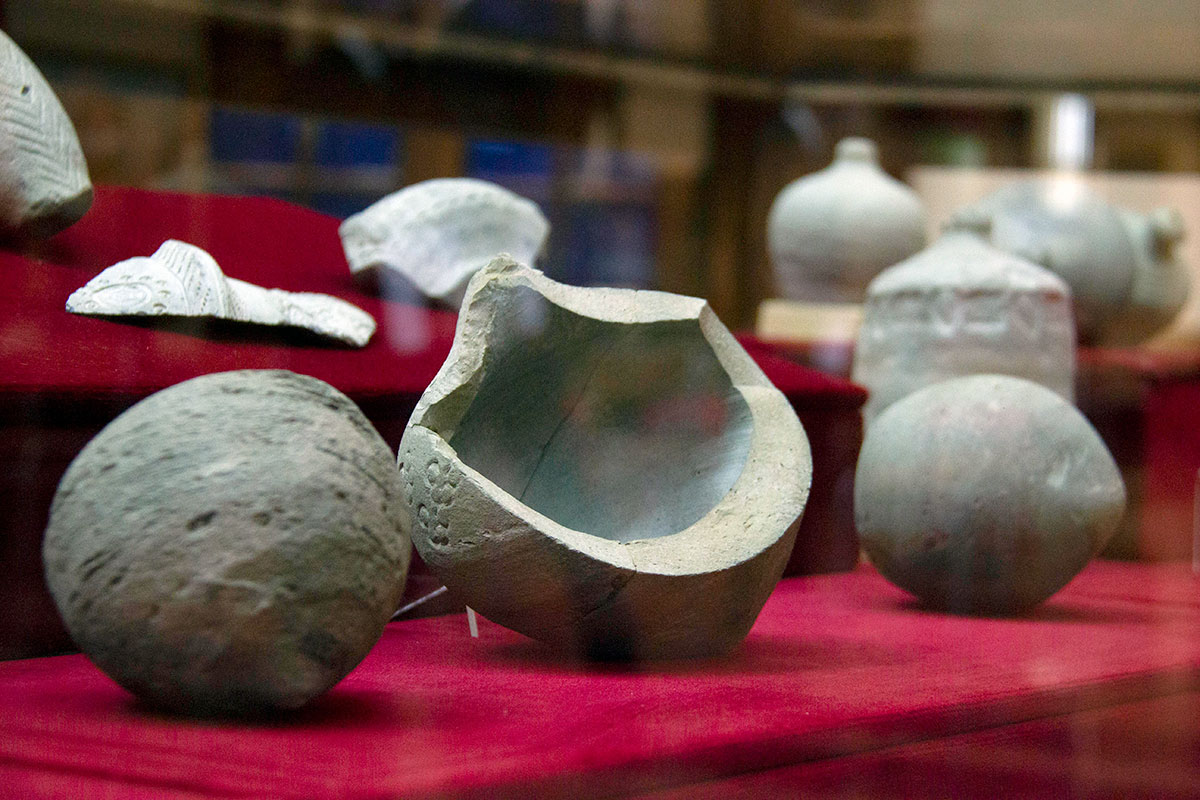The news that Turkmen archaeologists have discovered new artifacts on the territory of the Abiverd State Historical and Cultural Reserve is not new, perhaps that is why the long-awaited transfer of some of them to the fund of the State Museum of the State Cultural Center of Turkmenistan became an event that gathered many journalists and photojournalists.

The solemn presentation of artifacts, in addition to the staff of the museum, was attended by teachers of the Department of Archeology and the Department of History and Ethnography of the Turkmen State University. Makhtumkuli, specialists of the National Department for the Protection, Study and Restoration of Historical and Cultural Monuments of Turkmenistan, the State Historical and Cultural Reserve "Abivert".
On this day, an archaeological vector reigned in the State Museum. On the way to the showcases with the artifacts on display, the participants of the event made an excursion, getting acquainted with the photographic materials of the exhibition dedicated to the history of the Middle Ages of Turkmenistan - partially preserved architectural monuments of antiquity and the results of archaeological excavations.

And, finally, here they are - small vessels with a capacity of 130 g, sphero-conical shape, often found in products among the medieval peoples of Central Asia.
From an interview for our newspaper from the candidate of historical sciences, associate professor of the Department of Archeology of Turkmen State University named after Makhtumkuli, Akmurat Babayev:

- As for the time of making these small clay jugs, the opinions of scientists-archaeologists coincide - this is the end of the 12th - beginning of the 14th centuries. And on the question of their purpose - opinions differ. Several versions were expressed, each of which was carefully considered before being rejected. The use of jugs for cooking is not realistic - too small a container, for storing incense - too rough a container for women of fashion who would prefer an elegant glass bottle, for storing medicines - the same thing. It has been suggested that these are explosive containers for defensive purposes. This hypothesis was also rejected: gunpowder, invented in China in the 9th century, was a state secret and did not have distribution throughout the world at that time. The hypothesis about the transportation of holy water in these containers was also rejected.

I, like most archaeological scientists, tend to adhere to the point of view of Academician Mikhail Mason, who is rightfully considered the patriarch of Turkmen archeology, ”emphasized Akmurat Oveznepesovich. - He expressed the opinion that mercury was produced in these parts (not far from Kaakhk) in the Middle Ages. In confirmation of this version, small furnaces were discovered during excavations, which supposedly served for the production of mercury. At that time, mercury was used in gold mining, as well as in medicine. It was a well-demanded product distributed along the Great Silk Road in clay pots, some of which appeared before us after 8 centuries.
New artifacts discovered on the territory of the medieval monument of Abiverd will henceforth take a worthy place in the halls of the "History of the Middle Ages" of the State Museum along with other exhibits. These museum values will serve to study the rich history of our ancestors and material values created by them.

It should be noted that the excavations were carried out in accordance with the program approved by the President of the country "On carrying out archaeological excavations in 2018-2021 on the territory of historical and cultural monuments of Turkmenistan located along the Great Silk Road, scientific study, as well as the popularization of cultural heritage."










